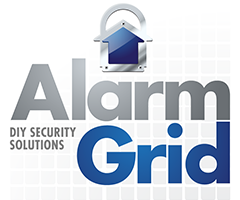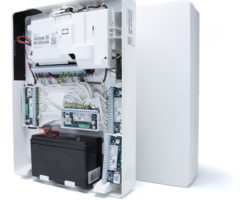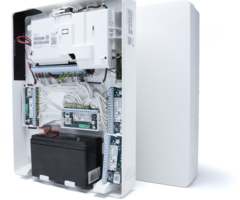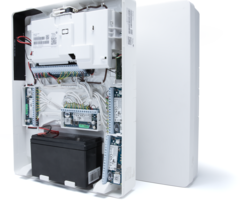DIY Wired Security Systems











The idea of setting up a security system may seem intimidating at first. But really, it isn't so bad. Our DIY wired kits include everything that is required for getting started with a hardwired alarm system. Alarm Grid also offers videos and FAQs for helping users set up and program a hardwired security system. And if a user ever requires additional assistance, we also offer online and support for monitored customers. With all these resources available, a DIY user should have very few issues with setting up a hardwired system on their own, with no professional installer being needed.
A hardwired alarm control panel serves as the "brains" of a security system. Any security devices and other sensors will connect to this piece of equipment. When a sensor sends out an activation signal, it is up to the panel to perform the programmed response. This could be as simple as displaying the faulted zone, or it might involve triggering an alarm and alerting a central station. For that reason, it is very important that a hardwired panel is set up correctly. Remember, if the panel fails, then the rest of the security system will fail as well.
Most hardwired systems will require some add-ons to achieve proper functionality. These DIY wired system kits take that into consideration, and they include all the devices needed for a complete setup. One device that is certainly used with any hardwired alarm system is an external keypad. This tool add-on is necessary for performing the very basic functions of an alarm system. This includes arming and disarming the system and making important programming changes. A user may also want to add a wireless receiver so that they can use wireless sensors with their system. Additionally, a hardwired system will need a communicator so that it is not dependent on phone line service for monitoring.
While the panel is the core of a security system, the sensors that used with the setup are extremely important as well. These are the devices that will alert the system when an event occurs. This could be anything from a door being opened, motion in the area, glass being broken or a fire alarm being set off. When a sensor is activated, it will send a signal to the system to perform a programmed response. Some common programmed responses are requiring a system disarm within a specified period and immediately sending out an alarm.
For hardwired systems, it will typically be necessary to run and fish some wires throughout the building. For users who don't feel comfortable doing this, we generally recommend using a wireless system instead. But for tech-savvy DIY users, a hardwired system can be a great option. This is especially true when support for multiple partitions is needed. Once the system is set up, then sensors will need to be programmed with the system. This includes learning in the sensors and choosing a Response Type for each sensor. Afterwards, your home or business will be protected.

